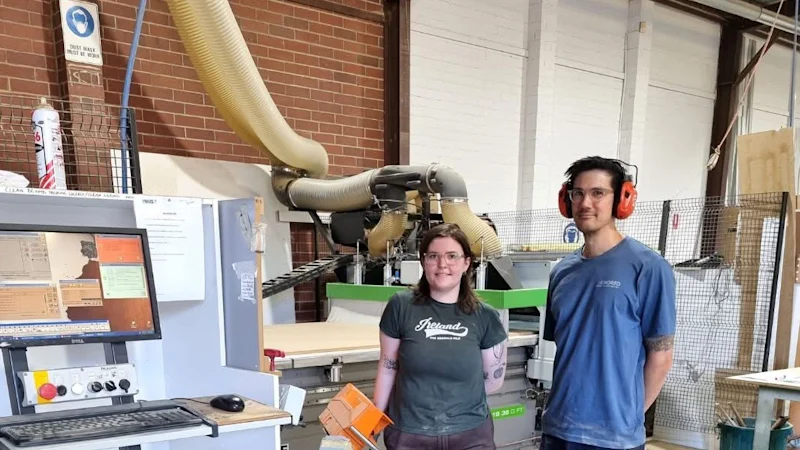
“I wasn’t expecting any replies, but one business got back to me and said yes.”
Ashby started his apprenticeship and six months later, began a 2½-year course at North Metropolitan TAFE.
“I finally have a career I have passion for,” he said.
“University is great for many, but it’s not the be-all and end-all. My advice to young people leaving school is to not close yourself off to options based on others’ opinions and have a good think about where you want to be.
“Work takes up 70 to 80 per cent of your life and you should enjoy it – and you don’t have to go to university to make money.”
Simon Ashby was a WA Apprentice of the Year 2024 finalist after completing Certificate III in Cabinet Making. He now works for Kindred Design and Cabinetry.
The number of students choosing to study ATAR courses across WA is dropping.
In 2025, the participation rate was just 27 per cent of the school leaving-aged cohort.
In contrast, the number of students enrolling in TAFE has increased and certain vocational professions have recorded an increase in graduates.
That increase is not surprising, with the state government investing in low-fee and fee-free TAFE courses.
Skills and TAFE Minister Amber-Jade Sanderson recently announced that from January 2026 there would be six more construction trades and pre-apprenticeships added to the fee-free and low-fee TAFE plan.
“We’re working around where those pinch points are in the economy, and obviously housing and clean energy infrastructure are two areas where we want to significantly expand those trades,” she said.
“You are guaranteed a job if you do an electrical trade. They are well-paid jobs, and they’re secure jobs in Western Australia.”
According to Jobs and Skills Australia, over 90 per cent of new jobs will require post-secondary qualifications, with around 44 per cent specifically requiring a vocational qualification.
A Department of Training and Workforce Development spokesperson said those figures underscored the “importance of a strong, integrated tertiary education system that supports multiple pathways to success.”
“It’s vital that all Western Australians – especially school-leavers – are aware of the full range of tertiary study options available to them,” they said.
“Publicly funded enrolments at WA TAFE colleges have grown by 25.5 per cent since 2020, reflecting a positive shift among young people who are embracing VET as a career pathway.
“More than half of WA’s VET students are under the age of 25, highlighting the sector’s critical role in shaping the next generation of skilled workers.”
A new report from Pearson, titled Lost in Translation, has revealed university graduates now face challenges in underemployment and uncertain career pathways.
That matches data from the 2024 Graduate Outcomes Survey, which found full-time employment for undergraduates nationally fell to 74 per cent last year.
The Jobs Availability Snapshot also found entry-level jobs had declined over the last decade and accounted for less than 11 per cent of all positions advertised in 2024.
Pearson’s country head and ANU spokesman Taha Haidermota said the traditional school-to-career route, which often champions university, was no longer fit for purpose.
“You hear a lot of conflicting things – on one hand, Australia has got a skill shortage and then at the same time, there are people who are getting qualified and then struggling to find employment in their chosen field,” he said.
“The report found it’s $104 billion a year that we lose during the transition period between education and work, or between jobs.
Loading
“And behind all of these numbers are people. Every young person who doesn’t get into a career or doesn’t find work right away, that’s lost income, it’s a loss of confidence, loss of opportunity.”
Haidermota said young people in WA had an unemployment rate of around 10 per cent – almost twice as high as the rest of the economy.
He urged the government and employers to consider other ways of hiring people, including by creating space for internships or apprenticeships and upskilling them on the job.
In particular, this applies to the resources sector, which Haidermota said employed up to 50 per cent of the WA’s workforce.
“This isn’t the archetypal 1950s scenario where you get one job and you go for 40 years – continuous learning and reskilling is important,” he said.
“We have too many workers whose new skills we don’t know how to use.”
Start the day with a summary of the day’s most important and interesting stories, analysis and insights. Sign up for our Morning Edition newsletter.





